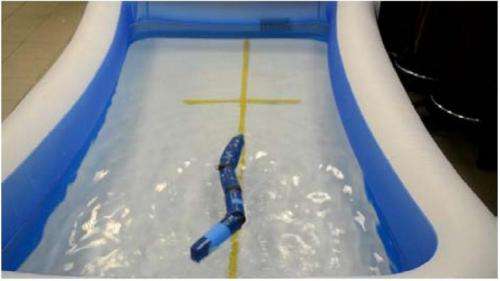An eel-lectrifying future for autonomous underwater robots

Sweden called off the hunt for a submarine after a week-long underwater search in the Stockholm archipelago. Triggered by a reported sighting of a Russian submarine, the alleged 'invasion' had been widely anticipated by military specialists and the media.
"Our assessment is that in the inner archipelago there was a plausible foreign underwater operation," Rear Adm. Anders Grenstad commented, "But we believe that what has violated Swedish waters has left."
"Whatever was there could not have been a conventional submarine," Grenstad said, but a "craft of a lesser type". He added that it was "not possible to state how big it was or to what country it belonged". "The operation is substantially complete. The vessels and amphibious units have gone to port and resumed normal preparedness," he said. But, was there, or wasn't there underwater activity in the area? Should the Swedish Navy be searching for something smaller than a dinosaur-like submarine?
Work by the Russian and the Allied militaries to develop underwater devices for information gathering are currently underway. Their aim is to reach areas which are difficult or even impossible for divers to reach; to inspect and clear mines on the sea floor, or even combat enemy scuba divers. The existing effort undertaken trains guard-dolphins; however, animal-rights-activists have opined that using dolphins for military reasons is inhumane, and may harm the world's ecology as rivals might seek to eliminate the threat by killing off the species. Hence, alternative strategies have been put in place to develop unmanned underwater systems as the replacement for military-trained dolphins.
To be able to be operable remotely, small, sophisticated and intelligent enough to operate autonomously underwater, these devices must be flexible, and able to operate in narrow spaces like a snake. Inspired by Anguilliform fish, due to their superior flexibility compared to the other fish forms, a team in Singapore has developed and built a prototype for an eel-like robotic fish. A snake-like form also gives the Anguilliform Robot amphibious potential, owing to the similarity in undulatory locomotion in water and on solid ground.
Mechanically, this robotic fish consists of N-links and N−1 joints, and is controlled by the torques applied to the joints. It was designed to move forward, and backward, as well as turnaround through different reference inputs driven by a three-dimensional coupled Andronov-Hopf oscillators, an artificial neural network, and an outer amplitude modulator. Prof. Jianxin Xu, co-author and researcher for the project reports:
We performed simulations and experiments on the robotic fish, equipped with a motion library to cope with different scenarios, and the results validate the effectiveness of the proposed controllers was able to swim forward and backward as predicted.
More information: The full report on the prototype built and tested can be found in the Unmanned Systems journal, Vol. 2, No. 4, 2014. www.worldscientific.com/doi/pd … 42/S230138501440007X
Provided by World Scientific Publishing




















